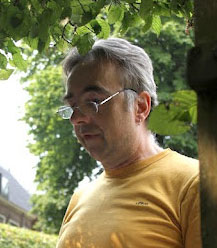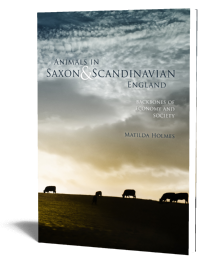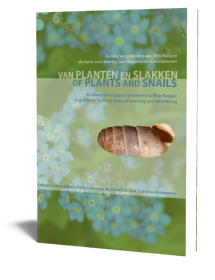Barely Surviving or More than Enough?
The environmental archaeology of subsistence, specialisation and surplus food production
Edited by Maaike Groot, Daphne Lentjes & Jørn Zeiler | 2013

Barely Surviving or More than Enough?
The environmental archaeology of subsistence, specialisation and surplus food production
Edited by Maaike Groot, Daphne Lentjes & Jørn Zeiler | 2013
Paperback ISBN: 9789088901997 | Hardback ISBN: 9789088904769 | Imprint: Sidestone Press | Format: 182x257mm | 298 pp. | Language: English | 82 illus. (bw) | 19 illus. (fc) | Keywords: archaeology, subsistence, food production | download cover
Read online or downloaded 4132 times
-
Digital & Online access
This is a full Open Access publication, click below to buy in print, browse, or download for free.
-
Buy via Sidestone (EU & UK)
-
Buy via our Distributors (WORLD)
For non-EU or UK destinations you can buy our books via our international distributors. Although prices may vary this will ensure speedy delivery and reduction in shipping costs or import tax. But you can also order with us directly via the module above.
UK international distributor
USA international distributor
-
Bookinfo
Paperback ISBN: 9789088901997 | Hardback ISBN: 9789088904769 | Imprint: Sidestone Press | Format: 182x257mm | 298 pp. | Language: English | 82 illus. (bw) | 19 illus. (fc) | Keywords: archaeology, subsistence, food production | download cover
Read online or downloaded 4132 times

We will plant a tree for each order containing a paperback or hardback book via OneTreePlanted.org.
How people produced or acquired their food in the past is one of the main questions in archaeology. Everyone needs food to survive, so the ways in which people managed to acquire it forms the very basis of human existence. Farming was key to the rise of human sedentarism. Once farming moved beyond subsistence, and regularly produced a surplus, it supported the development of specialisation, speeded up the development of socio-economic as well as social complexity, the rise of towns and the development of city states. In short, studying food production is of critical importance in understanding how societies developed.
Environmental archaeology often studies the direct remains of food or food processing, and is therefore well-suited to address this topic. What is more, a wealth of new data has become available in this field of research in recent years. This allows synthesising research with a regional and diachronic approach.
Indeed, most of the papers in this volume offer studies on subsistence and surplus production with a wide geographical perspective. The research areas vary considerably, ranging from the American Mid-South to Turkey. The range in time periods is just as wide, from c. 7000 BC to the 16th century AD. Topics covered include foraging strategies, the combination of domestic and wild food resources in the Neolithic, water supply, crop specialisation, the effect of the Roman occupation on animal husbandry, town-country relationships and the monastic economy. With this collection of papers and the theoretical framework presented in the introductory chapter, we wish to demonstrate that the topic of subsistence and surplus production remains of interest, and promises to generate more exciting research in the future.
Studying subsistence and surplus production – Maaike Groot and Daphne Lentjes
The role of gathering in Middle Archaic social complexity in the Mid-South: a diachronic perspective – Stephen B. Carmody and Kandace D. Hollenbach
Rethinking Neolithic subsistence at the gateway to Europe with new archaeozoological evidence from Istanbul – Canan Çakırlar
Agricultural production between the 6th and the 3rd millennium cal BC in the central part of the Valencia region (Spain) – Guillem Pérez Jordà and Leonor Peña-Chocarro
From subsistence to market exchange: the development of an agricultural economy in 1st-millennium-BC Southeast Italy – Daphne Lentjes
Three systems of agrarian exploitation in the Valencian region of Spain (400–300 BC) – Mª Pilar Iborra Eres and Guillem Pérez Jordà
The well in the settlement: a water source for humans and livestock, studied through insect remains from Southeast Sweden – Magnus Hellqvist
The Late Iron Age-Roman transformation from subsistence to surplus production in animal husbandry in the Central and Western parts of the Netherlands – Joyce van Dijk and Maaike Groot
Tracing changes in animal husbandry in Mallorca (Balearic Islands, Western Mediterranean) from the Iron Age to the Roman Period – Alejandro Valenzuela, Josep Antoni Alcover, Miguel Ángel Cau
Food production and exchanges in the Roman civitas Tungrorum – Fabienne Pigière and Annick Lepot
Entrepreneurs and traditional farmers: the effects of an emerging market in Middle Saxon England – Matilda Holmes
Scant evidence of great surplus: research at the rural Cistercian monastery of Holme Cultram, Northwest England – Don O’Meara

Dr. Maaike Groot
Maaike Groot (1973) studied provincial-Roman archaeology at VU University Amsterdam and completed her PhD on a large animal bone assemblage from the Roman site of Tiel-Passewaaij in 2007. She subsequently carried out a (Veni) post-doctoral project on the effect of the Roman occupation on animal husbandry in the central part of the Netherlands.

Drs. Jørn Zeiler
Jørn Zeiler (1955) studied biology in Groningen. He graduated in 1997 on a study of hunting and animal husbandry in the Netherlands during the Neolithic. He was a research fellow at the Biological-Archaeological Institute (the present Groningen Institute of Archaeology) in Groningen from 1984 until 1992, when he set up his own research bureau ArchaeoBone, in which he has since been working as a free-lance archaeozoologist.

Dr. Daphne Lentjes
Daphne Lentjes (1980) studied Mediterranean archaeology at VU University Amsterdam and spent four years in Italy working as an archaeobotanist at the Laboratorio di Archeobotanica e Paleoecologia (LAP) of the Università del Salento, Lecce. She recently completed her PhD on long-term developments in landscapes and land use in southeast Italy in the first millennium BC. Daphne’s current investigations and teaching focus on environmental archaeology and the use of plant remains to study ancient landscapes and farming practices, with special focus on Italy and Greece.
Abstract:
How people produced or acquired their food in the past is one of the main questions in archaeology. Everyone needs food to survive, so the ways in which people managed to acquire it forms the very basis of human existence. Farming was key to the rise of human sedentarism. Once farming moved beyond subsistence, and regularly produced a surplus, it supported the development of specialisation, speeded up the development of socio-economic as well as social complexity, the rise of towns and the development of city states. In short, studying food production is of critical importance in understanding how societies developed.
Environmental archaeology often studies the direct remains of food or food processing, and is therefore well-suited to address this topic. What is more, a wealth of new data has become available in this field of research in recent years. This allows synthesising research with a regional and diachronic approach.
Indeed, most of the papers in this volume offer studies on subsistence and surplus production with a wide geographical perspective. The research areas vary considerably, ranging from the American Mid-South to Turkey. The range in time periods is just as wide, from c. 7000 BC to the 16th century AD. Topics covered include foraging strategies, the combination of domestic and wild food resources in the Neolithic, water supply, crop specialisation, the effect of the Roman occupation on animal husbandry, town-country relationships and the monastic economy. With this collection of papers and the theoretical framework presented in the introductory chapter, we wish to demonstrate that the topic of subsistence and surplus production remains of interest, and promises to generate more exciting research in the future.
Contents
Studying subsistence and surplus production – Maaike Groot and Daphne Lentjes
The role of gathering in Middle Archaic social complexity in the Mid-South: a diachronic perspective – Stephen B. Carmody and Kandace D. Hollenbach
Rethinking Neolithic subsistence at the gateway to Europe with new archaeozoological evidence from Istanbul – Canan Çakırlar
Agricultural production between the 6th and the 3rd millennium cal BC in the central part of the Valencia region (Spain) – Guillem Pérez Jordà and Leonor Peña-Chocarro
From subsistence to market exchange: the development of an agricultural economy in 1st-millennium-BC Southeast Italy – Daphne Lentjes
Three systems of agrarian exploitation in the Valencian region of Spain (400–300 BC) – Mª Pilar Iborra Eres and Guillem Pérez Jordà
The well in the settlement: a water source for humans and livestock, studied through insect remains from Southeast Sweden – Magnus Hellqvist
The Late Iron Age-Roman transformation from subsistence to surplus production in animal husbandry in the Central and Western parts of the Netherlands – Joyce van Dijk and Maaike Groot
Tracing changes in animal husbandry in Mallorca (Balearic Islands, Western Mediterranean) from the Iron Age to the Roman Period – Alejandro Valenzuela, Josep Antoni Alcover, Miguel Ángel Cau
Food production and exchanges in the Roman civitas Tungrorum – Fabienne Pigière and Annick Lepot
Entrepreneurs and traditional farmers: the effects of an emerging market in Middle Saxon England – Matilda Holmes
Scant evidence of great surplus: research at the rural Cistercian monastery of Holme Cultram, Northwest England – Don O’Meara

Dr. Maaike Groot
Maaike Groot (1973) studied provincial-Roman archaeology at VU University Amsterdam and completed her PhD on a large animal bone assemblage from the Roman site of Tiel-Passewaaij in 2007. She subsequently carried out a (Veni) post-doctoral project on the effect of the Roman occupation on animal husbandry in the central part of the Netherlands.

Drs. Jørn Zeiler
Jørn Zeiler (1955) studied biology in Groningen. He graduated in 1997 on a study of hunting and animal husbandry in the Netherlands during the Neolithic. He was a research fellow at the Biological-Archaeological Institute (the present Groningen Institute of Archaeology) in Groningen from 1984 until 1992, when he set up his own research bureau ArchaeoBone, in which he has since been working as a free-lance archaeozoologist.

Dr. Daphne Lentjes
Daphne Lentjes (1980) studied Mediterranean archaeology at VU University Amsterdam and spent four years in Italy working as an archaeobotanist at the Laboratorio di Archeobotanica e Paleoecologia (LAP) of the Università del Salento, Lecce. She recently completed her PhD on long-term developments in landscapes and land use in southeast Italy in the first millennium BC. Daphne’s current investigations and teaching focus on environmental archaeology and the use of plant remains to study ancient landscapes and farming practices, with special focus on Italy and Greece.
-
Digital & Online access
This is a full Open Access publication, click below to buy in print, browse, or download for free.
-
Buy via Sidestone (EU & UK)
-
Buy via our Distributors (WORLD)
For non-EU or UK destinations you can buy our books via our international distributors. Although prices may vary this will ensure speedy delivery and reduction in shipping costs or import tax. But you can also order with us directly via the module above.
UK international distributor
USA international distributor
- Browse all books by subject
-
Search all books

We will plant a tree for each order containing a paperback or hardback book via OneTreePlanted.org.
You might also like:
© 2026 Sidestone Press KvK nr. 28114891 Privacy policy Sidestone Newsletter Terms and Conditions (Dutch)








